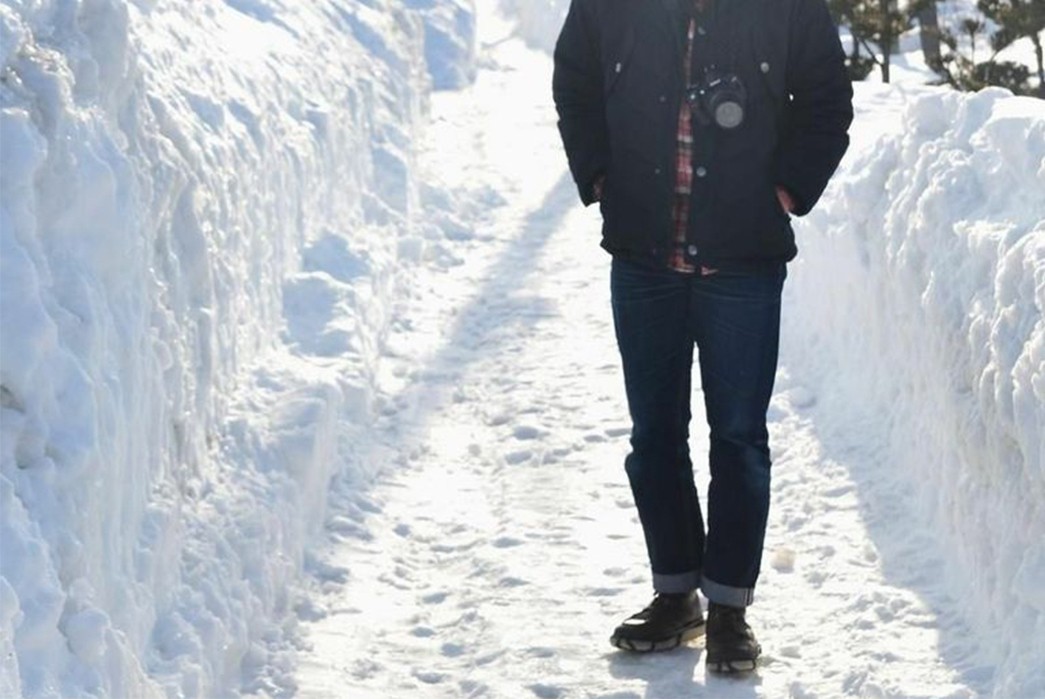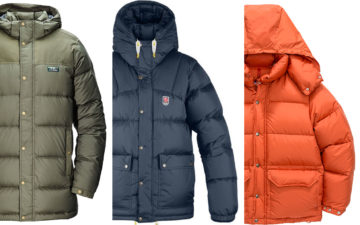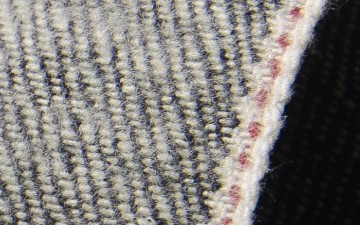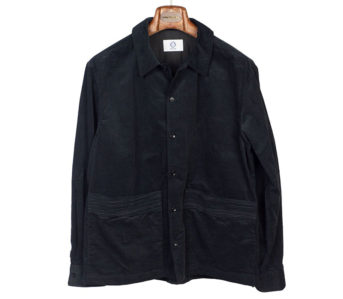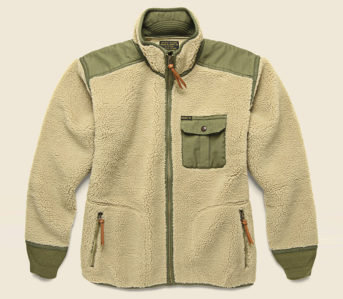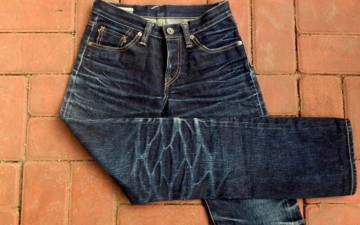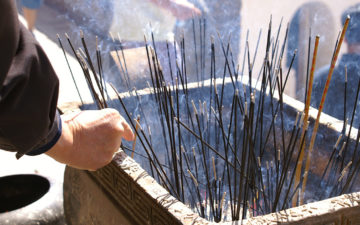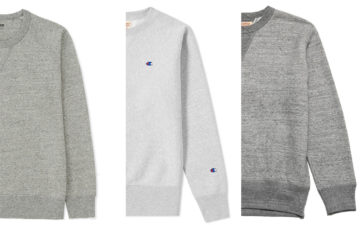The blistering heat of the summer has fried your brain and all of a sudden, you can’t remember how to dress for winter. You can’t remember a thing about layering or anything except lightweight cottons and breezy linens. But news flash, pal: you’re gonna need to brush up on staying warm – or else.
So let’s get this show on the road, with all the fabrics you’ll need to see you through the Fall and (dun dun dun) Winter in cozy comfort.
Tweed

Dr. Jones. Image via Paramount Pictures.
The textile most closely associated with academia, tweed isn’t just the domain of hot archaeology professors. This woven wool textile originated in Scotland and the most famous subset of tweed, Harris Tweed, was born in the Outer Hebrides. Tweed, due to its weight and is most often seen in outerwear, or in simpler times, in suiting.
Tweed is made from virgin wool, traditionally of a Scottish variety, and the raw fleece is dyed before even being turned into yarn. Yarn is made and then woven into fabric, a process that used to be done at home on hand-powered looms. Tweeds can be closely related to twills, but not strictly. Despite its weight and heft, tweed can be breathable, but like many of our favorite textiles, it can take a beating and needs time to break in.
Read more in our full breakdown and history of tweed.
Moleskin
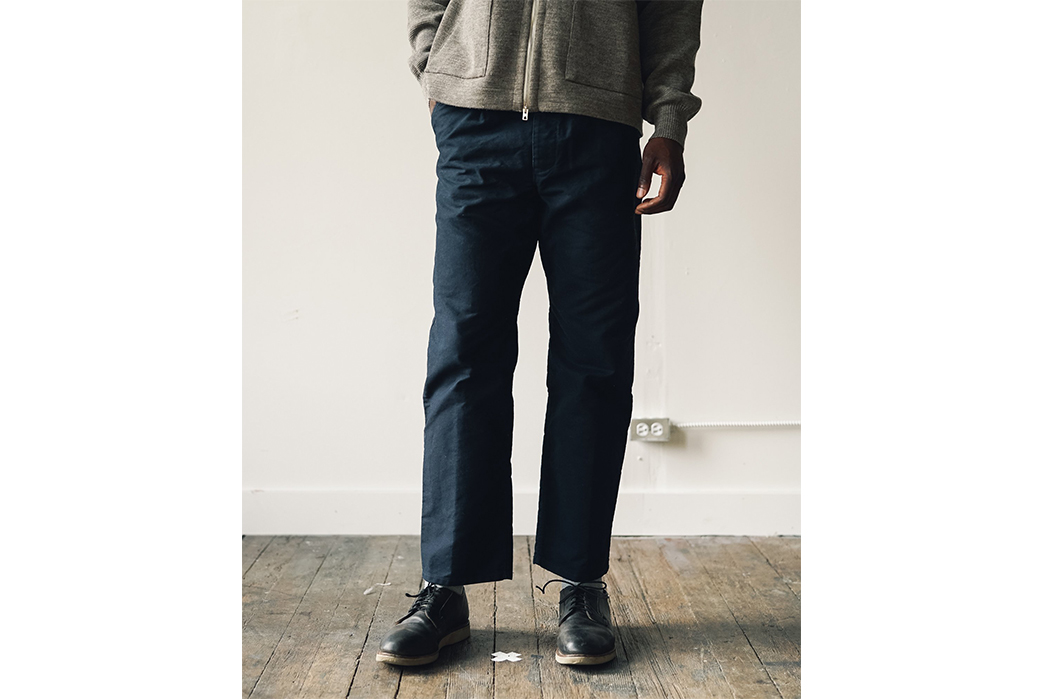
Moleskin Trousers. Image via Arpenteur
Before there was denim, the best of the best in workwear was Moleskin. Hopefully by now you’ve figured out that moleskin has nothing to do with the animal, rather, it’s a heavy cotton twill. Unlike denim and some of the other famous twills, moleskin is categorized as a “fustian fabric”. Apart from their weight and extremely tight knit, what designated a fustian fabric is that one side is brushed and the other painstakingly sheared away.
In the era of industrialization, this process became simpler and moleskin also became more prolific. First worn by farmers, then steelworkers, the sturdy fabric protected folks toiling in the nascent factories of this new age of manufacturing. Certain moleskins were even dyed to connote different industries – and in France, one of the places where the fabric was most widely worn, modern work pants (Dickies equivalents) are still designed to evoke this classic fustian knit.
We see this fabric used most often in trousers and jackets; typically reproductions of the “bleus de travail” worn by workers in the early – mid 1900s.
Read more in our complete guide to moleskin.
Corduroy
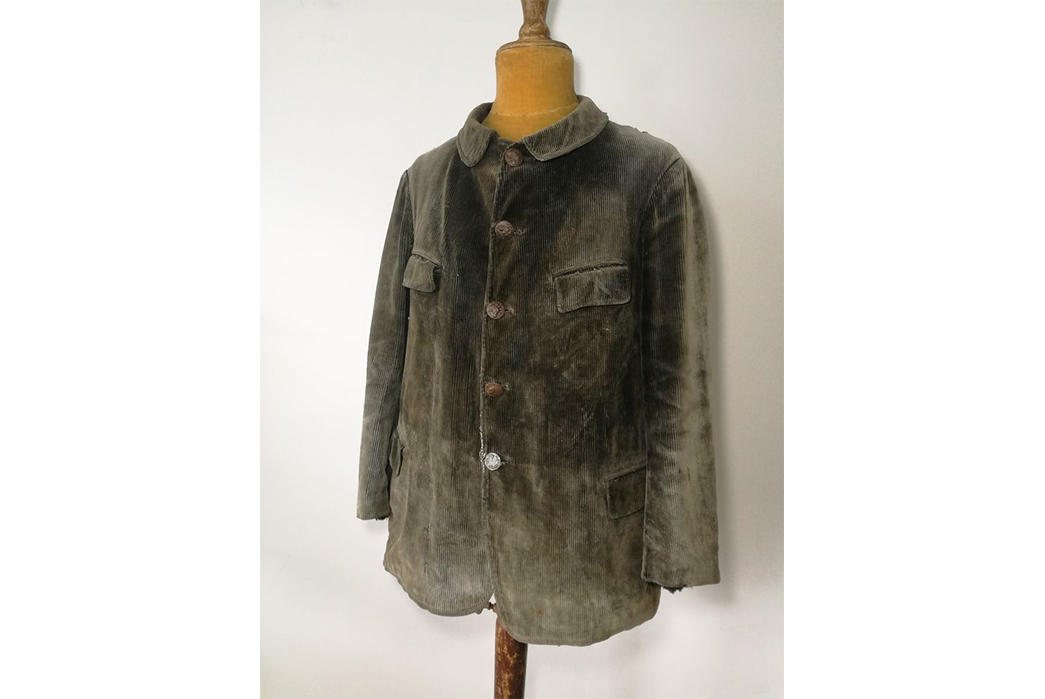
Corduroy Hunting Jacket. Image via Pinterest.
Another fustian fabric, corduroy feels synonymous with fall. A tightly-woven cotton fabric, just as with moleskin, part of the fabric is cut away, which, once singed and brushed, takes on corduroy’s signature ridged look. The ridges, known as wales, are sometimes thicker or thinner, depending on the fabric’s use. Upholstery and heavier outerwear pieces will have the wider wales, while certain, lighter garments will have the thinner, daintier wales.
When it was first made corduroy was a woolen weave, but now it’s often made from a heavyweight cotton. Cord was to England what moleskin was to France—similarly well-suited to sportsmen and blue-collar workers factories. But where moleskin isn’t especially well known for its warmth, corduroy has a stronger connection to the colder months and seems to hold body heat a bit better. Like moleskin, corduroy is most often seen in jackets and trousers, although finer-waled cords make for good shirting as well. Somehow along the way, corduroy became separate from its workwear history and is worn more like a dweeby, academic tweed. But like all our fabrics thus far, it breaks in gorgeously, whether out hunting or home reading a book.
Learn more about corduroy and its regal history.
Whipcord
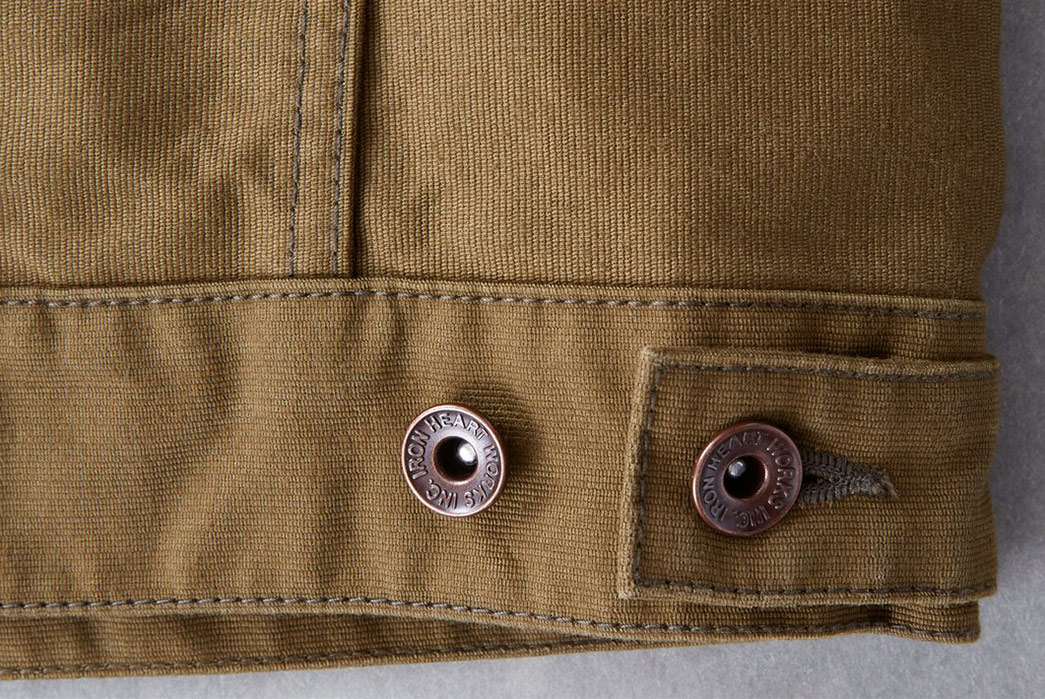
Iron Heart Whipcord. Image via Division Road Inc.
Whipcords can be made from pretty much anything, though modern whipcords will most often be a heavy cotton. Whipcords aren’t as plentiful as cords and moleskins, but similarly they’re a working fabric, made to stand up to rigorous environments.
Vintage pieces from L.L.Bean were often whipcord and some early Carhartt pieces also used the fabric. You can identify a whipcord from its diagonal rib, typically woven like a twill – most common to gabardine. (The above piece must have been cut on the bias, because its ribs run top to bottom.) An American workwear classic, whipcord’s deep ribs give the fabric an incredible depth as the fabric ages. Meant to hold up to the hardships of outdoor life, whipcord is an underrated classic.
The warmth and waterproofness of whipcord is totally dependent on the material in the weave. Cotton naturally won’t be as warm as wool, but the unique twill means they’re built to stand up to the toughest you can throw at them.
Flannel

Image via Huckberry.
Few fabrics signify fall quite like flannel. This Welsh fabric was first hand knit from wool, often in the characteristic plaids of the region in which they were produced. The big difference with wool was that oftentimes, one or both sides of the fabric were napped, to give it the fuzzy, softness we now take for granted.
Flannels don’t have to be plaid, nor do they have to be wool, but it’s the warmth and softness that make them so popular. It’s funny that this staple of American woodsman masculinity didn’t even come to the U.S. until the mid-1800s, when it was discovered by Hamilton Carhartt (of Carhartt, yes). Its durability and warmth make it a great choice for heavy work in the colder months. Though some of the most classic flannels of history have been wool, lookin’ at you, Pendleton, many now opt for heavy cottons for less itch and a similar level of warmth.
We see flannels most often in shirting – and occasionally in cozy winter pajamas, but for many years, it was also used in suiting. The “organization man” or the unique genre of businessman that sprang up in 1950s often wore a gray flannel suit, an affordable Don Draper-y number perfect for the business squares of the postwar era.
Brush up with more flannel in our history of the fabric.
Down Fill
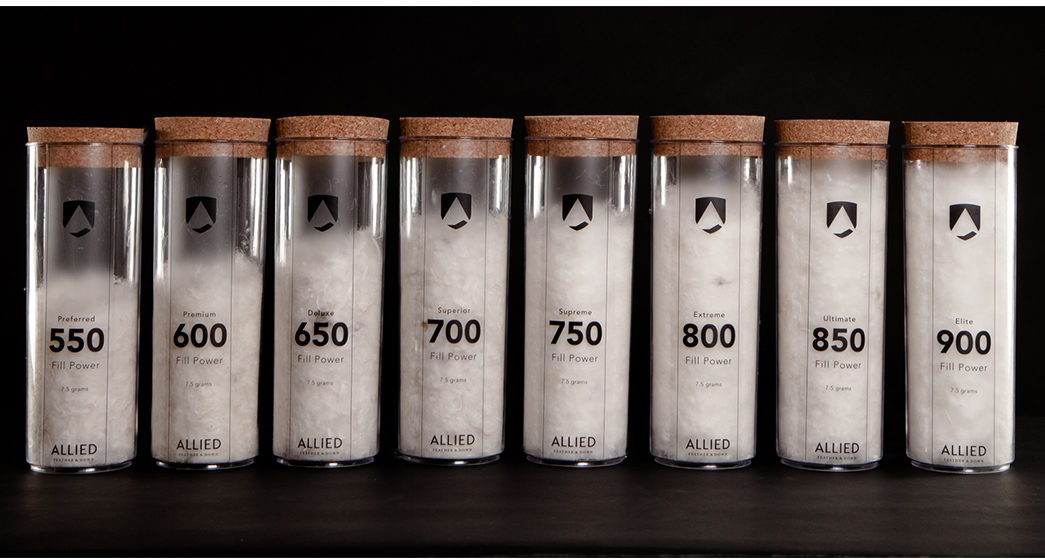
Image via Trackmydown.
Down fill is about the warmest stuff you can get when things get cold. Down is the soft plumage from birds like geese and ducks that sits between the animal’s body and its outermost layer of feathers.
Down fill works in much the same way, insulating the body, sheltered within a waterproof and windproof shell. The most important thing about the down is the air between the fibers, which gets trapped and heated next to your body. As with many natural fibers, down is perhaps the most efficient way to stay warm, but unfortunately its production can come with a cost. Down is often live-plucked from birds, which many agree is an inhumane method, so some of the biggest brands that use down are committing themselves to transitioning to a synthetic alternative.
Down is simply the insulation, a garment’s quality hinges not only on the amount of down in its jackets, but also the quality and construction of its shell.
Ever wonder what those numbers next to down garments mean? Have a look at our guide to down fill powers.
Gore-Tex
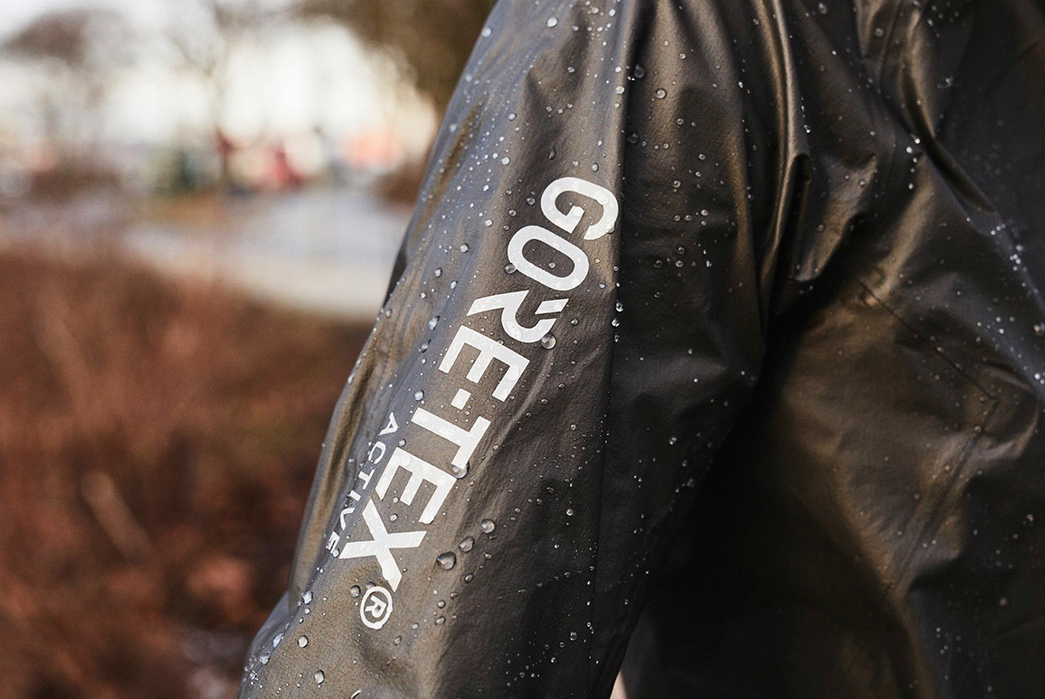
Image via Alton Sports
Invented in 1969, Gore-Tex is a waterproof membrane, which is a stretched porous form of polytetrafluoroethylene. The lightweight layer can repel water, but can also release water vapor, making it more wearable than your average waterproofing. Early Gore-Tex models struggled to integrate the membrane into the body of the fabric, usually some kind of rainwear. Now it is coated on the outside with a Durable Water Repellent, which keeps the water on the outside and allowing the moisture generated by the wearer to be released.
Like down fill, Gore Tex is a small part of the garment’s waterproofness and winter-readiness. The seams must be taped and the construction must be of a high quality. Gore-Tex can be found in other places too: boots, medical implants, and insulation for cables – but this high quality material might give your winter wear the extra edge you need this winter.
Find out more about this high tech fabric in our history of Gore-Tex.

